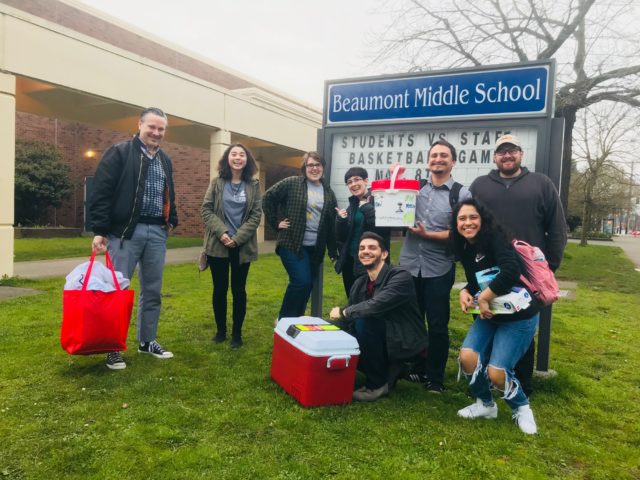“There are billions of neurons in our brains, but what are neurons? Just cells. The brain has no knowledge until connections are made between neurons. All that we know, all that we are, comes from the way our neurons are connected.” – Tim Berners-Lee
We’ve had so many outreach events lately it’s been hard to keep up with posts!
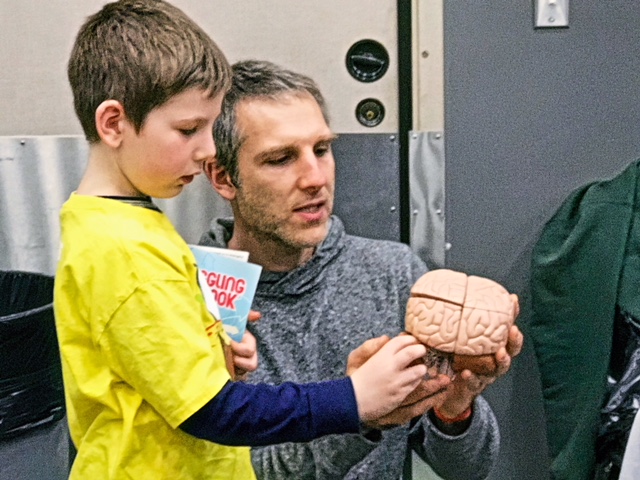
From the 900 kids and parents we met at the OHSU OMSI Brain Fair, to the 900 more at the Women in STEM event in Clark County, to the 400 students at HeLa High, to the three schools we visited in a single, 250 mile gorgeous Oregon day…
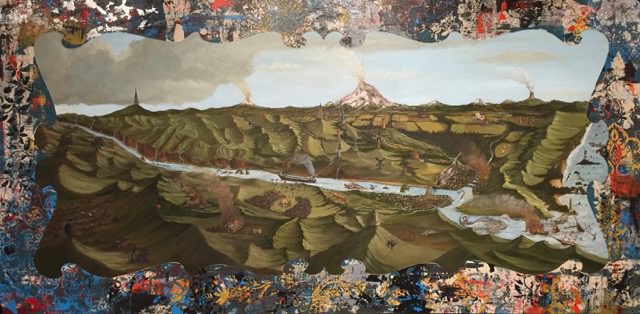
“Cascadia” 48×24 inches oil & acrylic on wood by NW Noggin Art Coordinator Jeff Leake
We’ve really been on the road for brain awareness…
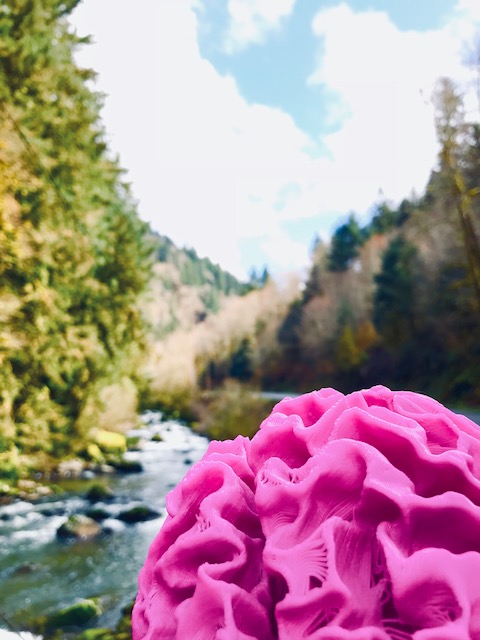
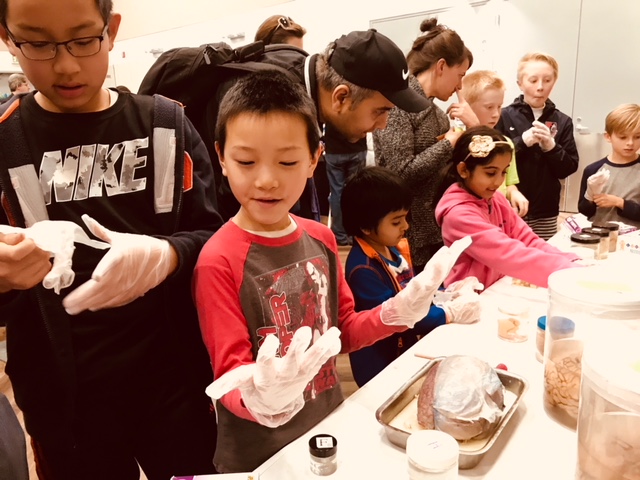
Two weeks ago we also dropped by Beaumont Middle School in northeast Portland, with a crowd of eager outreach volunteers, pipe cleaners and more jars and buckets of human and other animal brains..!

Our visit to Beaumont was part of a collaboration between Noggin and the Latino Network, a nonprofit dedicated to culturally-specific practices and services to support Latino youth and families in reaching their full potential…

LEARN MORE: Latino Network Learning & Lobes
LEARN MORE: Tres Escuelas en un Día!
Our volunteers were Aliese Poole, Jordan Ray, Ali Mack, Travis Christian and Sulema Rodriguez (a Noggin Resource Council member and NIH BUILD EXITO scholar) from Portland State University, Iris Gutierrez from WSU Vancouver, and Resource Council member Joey Seuferling…

¿Qué es ‘la memoria muscular’? ¿Como es el cerebro, específicamente los ganglios basales, involucrado?

We answered insightful questions about “muscle memory,” or rather the critical synaptic changes which occur during the development of our implicit skills, partly in a set of subcortical (“below” the cortex) structures collectively known as the basal ganglia…
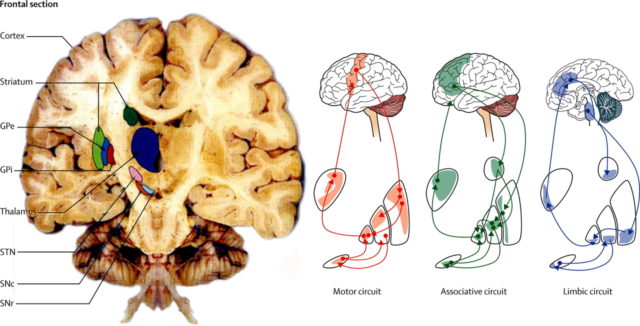
LEARN MORE: The role of the basal ganglia in learning and memory
Different forms of learning and memory are supported by different (though interacting) networks of brain regions, and the deep nuclei of the basal ganglia alter their structural and functional connections to encode our habits and “procedural” memories, including the fluid, well-timed movements associated with playing a sport or an instrument, or enjoying a dance.
LEARN MORE: EPSPs & Entropy! NW Noggin @ Shannon Entropy album release @ Holocene in Portland, Oregon
MORE ON MUSIC AND THE BASAL GANGLIA: Your brain on sax!
The basal ganglia underlie involuntary movements, motivated responses to stimuli, and that sense of “using the force” when we stop consciously micro-managing our behavioral responses and just do it!
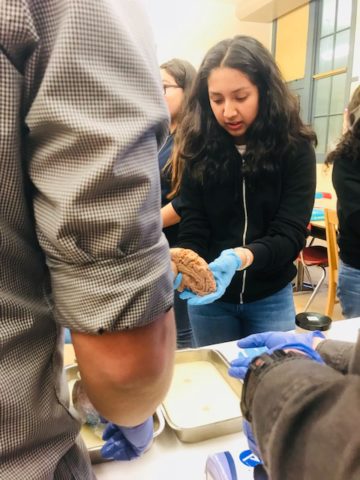
Muscle memory is in the brain – in the basal ganglia!
LEARN MORE: Brain Systems Underlying Declarative and Procedural Memories
There are several circuits in the basal ganglia, which link discrete cortical areas through subcortical “accelerator” pathways and also “brakes,” making these networks essential for the timing and speed of our movements, and also the timing and speed of our thoughts. They even impact our perception of how quickly time is passing by..!

“If a song is a living, breathing entity, you might think of the tempo as its gait—the rate at which it walks by—or its pulse—the rate at which the heart of the song is beating.” – Daniel Levitin

Many significant brain disorders, including Parkinson’s, Huntington’s, obsessive compulsive disorder, stuttering and Tourette’s, involve disruption of these basal ganglia circuits, and thus disruption of the speed and timing of movements, thoughts and perceptions…
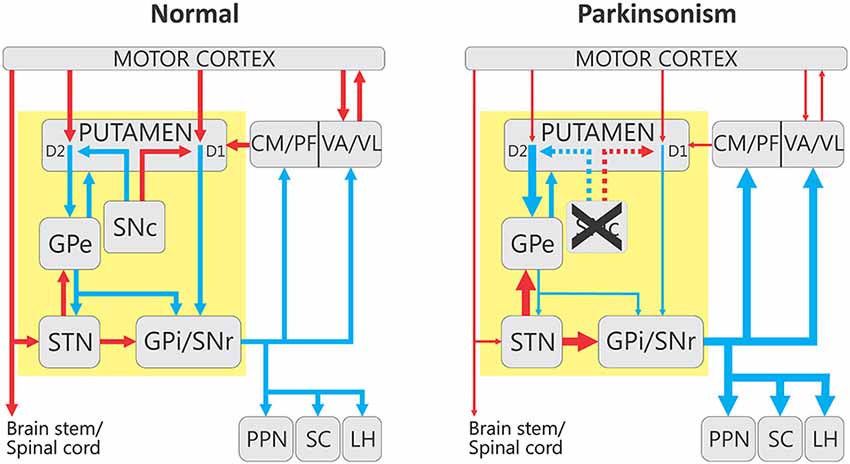
Image from: Functional Anatomy of the Basal Ganglia-Thalamocortical Circuits. Yellow indicates the subcortical nuclei that collectively comprise the basal ganglia. Not all connections are shown, but red arrows are excitatory; blue inhibitory. Motor neurons in the cortex link through basal ganglia to thalamic nuclei (CM/PF, VA/VL), which project back to cortex, modulating movement. In Parkinson’s, dopamine neurons in a brainstem area called the substantia nigra pars compacta (SNc) die, causing less acceleration in response to motivating stimuli, and more “braking…”
LEARN MORE: Functional Anatomy of the Basal Ganglia-Thalamocortical Circuits
LEARN MORE: The expanding universe of disorders of the basal ganglia

“It’s looks like carnitas!”
LEARN MORE: Action, time and the basal ganglia
LEARN MORE: Time Perception Mechanisms at Central Nervous System
LEARN MORE: Neural Networks for Time Perception & Working Memory

“WHILE MUSIC alone can unlock people with parkinsonism, and movement or exercise of any kind is also beneficial, an ideal combination of music and movement is provided by dance (and dancing with a partner, or in a social setting, brings to bear other therapeutic dimensions).” – Oliver Sacks
We’re particularly interested in the basal ganglia these days, and their role in learning and timing of implicit skills, as we’re now preparing for a new (*free!*) Velo Cult presentation on May 2 with Rebecca Hood of OHSU and Krystal Ngene and Danielle Ali-Cassim of the Kúkátónón African Children’s Dance Troupe…
MARK YOUR CALENDARS (May 2, 6-8pm!): Velo Cult: Rebecca Hood (OHSU) & Krystal Ngene/Danielle Ali-Cassim (Kúkátónón)

Una gran tarde con algunos estudiantes fantástico en Beaumont!

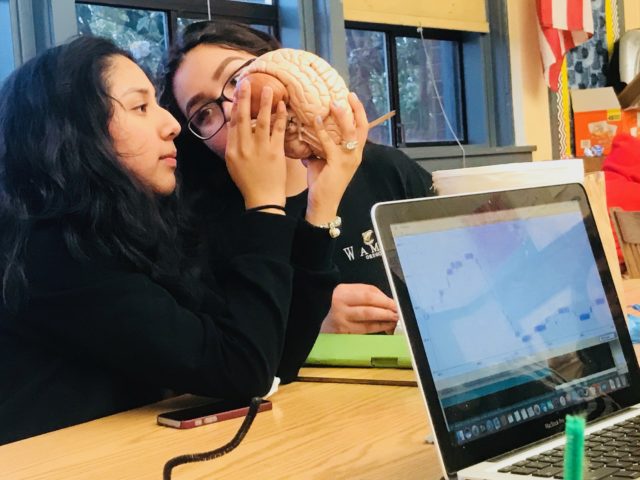

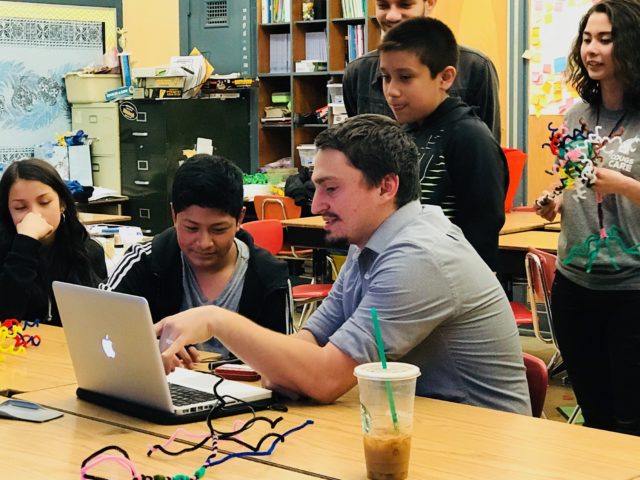
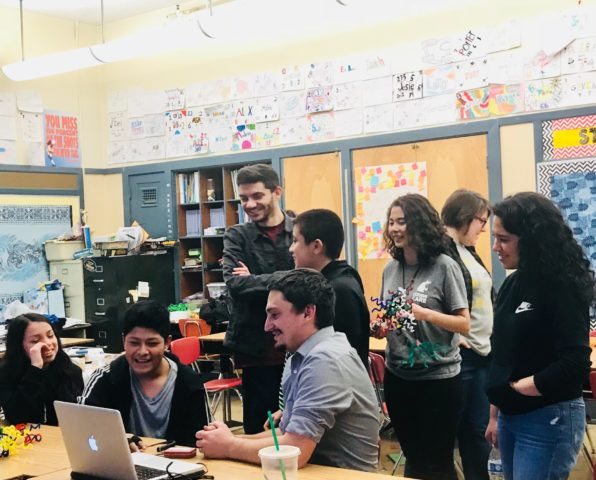
Many thanks to our Noggin volunteers, and to Erica Ronquillo, a Youth Engagement Specialist for the Latino Network, and her inquisitive students at Beaumont (and at Cesar Chavez Middle School earlier this same week too!)…
